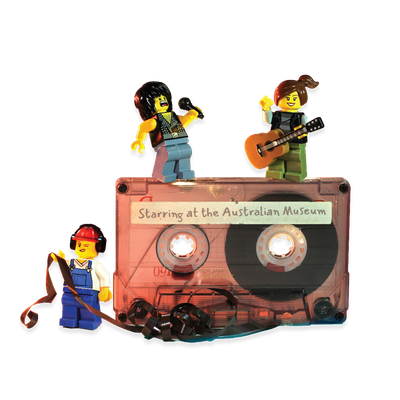Your search returned 33 results
By Page Type
By Tag
- All
- fish (966)
- blog (696)
- fishes of sydney harbour (401)
- First Nations (297)
- Blog (236)
- AMRI (169)
- archives (164)
- Eureka Prizes (145)
- Aboriginal and Torres Strait Islander (135)
- insect (126)
- Ichthyology (124)
- geoscience (109)
- minerals (102)
- climate change (98)
- podcast (94)
- Fish (91)
- Anthropology (89)
- International collections (80)
- Minerals Gallery (78)
- wildlife of sydney (78)
- Labridae (77)
- frog (73)
- gemstone (70)
- photography (65)
- history (63)
- Mollusca (60)
- gem (59)
- staff (59)
- Birds (56)
- Gems (56)
- Indonesia (56)
- education (55)
- shark (55)
- AMplify (54)
- people (53)
- earth sciences (50)
- past exhibitions (50)
- exhibition (49)
- Gobiidae (48)
- sustainability (46)
- Pomacentridae (45)
- Serranidae (44)
- lifelong learning (42)
- science (42)
- Earth and Environmental Science (41)
- Syngnathidae (41)
- Ancient Egypt (40)
- Bali (40)
- bird (40)
- dangerous australians (40)
-
Geological ore deposits
https://australian.museum/learn/minerals/geological-deposits/geological-ore-deposits/Geological ore deposits are of many different types and occur in all geological environments.
-
Earth's resources
https://australian.museum/learn/teachers/at-the-museum/earths-resources/Students will explore the Museum's diverse rock and mineral collection, engage with First Nations peoples' geologies and investigate the future of non-renewable resources.
-
Metamorphism
https://australian.museum/learn/minerals/shaping-earth/metamorphism/The word metamorphism comes from Greek and means 'change of form'. Metamorphic rocks are pre-existing rocks whose mineral composition and/or texture has been changed by processes within the Earth.
-
Learn how to classify rocks
https://australian.museum/learn/teachers/learning/rock-classification/Can you tell the difference between sedimentary, igneous and metamorphic rocks? Use this series of posters to learn how to classify rocks and tell the difference between them!
-
Jigsaw Earth
https://australian.museum/learn/teachers/learning/jigsaw-earth/Fit the Earth back together and get to know the tectonic plates, natural disasters and continental drift of our planet with this downloadable puzzle.
-
Make your own pocket volcano
https://australian.museum/learn/teachers/learning/pocket-volcano/Watch this video to learn what happens inside a volcano just before it erupts and make your own pocket volcano in the classroom or at home!
-
Magma
https://australian.museum/learn/minerals/shaping-earth/magma/Magma is hot molten mobile rock. Igneous rocks form when magma cools and solidifies. Magmas come out of active volcanoes as lavas.
-
Soils
https://australian.museum/learn/minerals/shaping-earth/soils/Soils are made up of three layers and are thickest where they are older and in warm and wet environments.
-
Volcanic rocks
https://australian.museum/learn/minerals/shaping-earth/volcanic-rocks/Volcanic rocks are divided into three main types: basaltic, volcaniclastic and pyroclastic.
-
Crystallography
https://australian.museum/learn/minerals/what-are-minerals/crystallography/Minerals can be identified by the shape of their crystals: called crystallography. External crystallography measures the outside properties of crystals such as length of crystal surfaces and the angles between these surfaces.
-
Discover more
2025 Australian Geographic Nature Photographer of the Year
Special exhibition
Now open -
Discover more
Unfinished Business
Special exhibition
Opens 1 November -
Discover more
Wansolmoana
Permanent exhibition
Open daily -
Find out more
Burra
Permanent kids learning space
10am - 4.30pm![]()
-
Discover more
Minerals
Permanent exhibition
Open daily![]()




